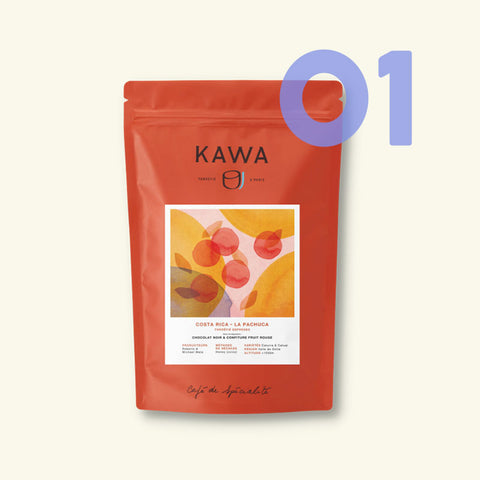Kawa, the French specialty coffee roaster based in Paris, aims to roast to the best of their possibility, as constantly as possible, favouring a specific roasting profile for every different coffee.
The 18ème arrondissement of Paris, once known as artists’ village inhabited by celebrities such as Dali and Picasso, are today one of the coolest Parisian neighbourhoods. Centred around the hill of Montmartre and its stunning Sacré-Cœur basilica, the area is home to many artisan realities and therefore it’s not a mystery why Kawa Coffee decided to open right here.

Born in 2016, since its opening, Kawa has had a precise focus: roasting to the best of their possibility, and with the greatest regularity. But what is a good roast for Kawa? It’s definitely a mix of many different factors. A good roast must awaken the consumers’ taste buds, but at the same time it must enhance the terroir of its origin, while sharing the specific story of each individual coffee.
As for the chosen roasting style, the Kawa guys has no doubt: “Every method deserves a roast profile”. When a new coffee come to the roastery, the first step is to define its role: will it work better as a filter coffee? Or maybe as a single-origin espresso? Or, it may happen, will it be the right coffee for a delicious blend?

At Kawa, they strongly believe that almost all coffees need to be roasted differently for espresso or filter use, with the exception of a few specific (often exceptional) terroirs or coffees that can work really well as omni-roast, suitable for both filter and espresso.

After each roasting, a thorough cupping process begins. The freshly roasted coffee is cupped 24 hours later and, when they have a new coffee on the menu, they do from two to five different roasts, and taste all the coffees over a period of 21 days. It’s only at that point, when the roasting profile suits them, that they start serving the coffee: the first batches work as test samples for their professional customers, and the rest is quickly put for sale through the usual channels.
Kawa
(Est. 2016)
189 rue d'aubervilliers
75018 Paris
France
Featured in
The Right Roast Coffee Club 2021 July 'TROPICANA' edition
The Right Roast Coffee Club 2023 January 'PROCESS' edition



